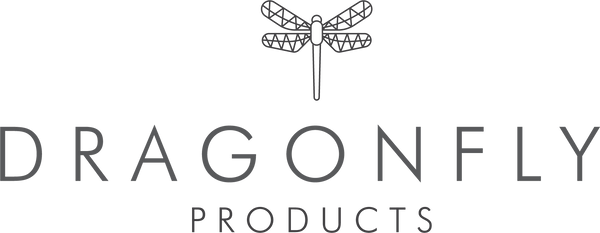
What is Slippery Elm and How Does it Benefit Dogs?
Slippery elm is derived from the inner bark of the North American elm tree, known scientifically as Ulmus rubra. This herbal remedy has been used for centuries due to its soothing properties, particularly for the digestive and respiratory systems. When mixed with water, slippery elm forms a thick, gel-like substance called mucilage, which coats and soothes mucous membranes.
For dogs, slippery elm offers a variety of health benefits. It is commonly used to treat gastrointestinal issues such as diarrhoea, constipation, and irritable bowel syndrome (IBS). The mucilage helps protect and heal the digestive tract by forming a protective barrier that reduces inflammation. Beyond digestion, slippery elm is also used for treating respiratory conditions like sore throats and coughs, as well as topical skin irritations such as hot spots or burns.
Table of Contents
- What is Slippery Elm and How Does it Benefit Dogs?
- Is Slippery Elm Safe for Dogs?
- What Dosage of Slippery Elm Should I Give My Dog?
- Can Slippery Elm Help with My Dog's Digestive Issues?
- Can Slippery Elm Treat Dog Diarrhoea or Constipation?
- How Do I Prepare Slippery Elm for My Dog?
- Can Slippery Elm Be Used for Respiratory Problems in Dogs?
- Are There Any Side Effects of Slippery Elm for Dogs?
- How does Slippery Elm Interfere with Other Medications for Dogs?
- Is Slippery Elm Effective for Skin Conditions in Dogs?
Is Slippery Elm Safe for Dogs?
Slippery elm is generally considered safe for dogs when used appropriately. It is a non-toxic herb, and most dogs tolerate it well, especially since its mild, sweet taste is usually palatable. However, it's crucial to consult with a veterinarian before adding any supplement, including slippery elm, to your dog’s regimen, if your dog is taking other medications. This is because slippery elm can interfere with the absorption of other drugs due to its mucilaginous properties.
While rare, some dogs may have an allergic reaction to slippery elm. Signs of an allergy may include itching, swelling, or gastrointestinal upset. If any of these symptoms occur, discontinue use immediately.
What Dosage of Slippery Elm Should I Give My Dog?
The correct dosage of slippery elm for dogs depends on the size of the dog and the condition being treated. A general guideline is to give 20 mg per kg of body weight two to four times per day. The most common form of slippery elm is powdered bark, which can be mixed with water to create a gel or syrup. This can be administered orally, either mixed with food or given directly using a syringe.
If using capsules or tablets, the dosage is typically the same: open the capsule and mix the powder with water before administering.
Can Slippery Elm Help with My Dog's Digestive Issues?
Yes, slippery elm is particularly effective in treating various digestive issues in dogs. It works by coating the stomach and intestines with a protective mucilage that reduces inflammation and irritation. This makes it ideal for treating conditions like diarrhea, constipation, colitis, and even more serious conditions like inflammatory bowel disease (IBD).
Slippery elm is gentle enough to be used as a natural remedy for upset stomachs, vomiting, and nausea. It can also help manage acid reflux by soothing the lining of the esophagus and stomach, making it a versatile treatment for a range of gastrointestinal ailments.
Can Slippery Elm Treat Dog Diarrhoea or Constipation?
Slippery elm is beneficial for both diarrhoea and constipation because of its dual action on the digestive tract. For diarrhoea, it helps by soothing inflamed tissues, absorbing excess fluid, and forming a gel-like barrier that protects the gut lining. For constipation, slippery elm’s mucilage helps lubricate the intestines and ease the passage of stool.
Many holistic veterinarians recommend slippery elm for these conditions as it is gentle yet effective. However, if your dog’s digestive issues persist for more than a few days, it’s important to consult a vet, as prolonged symptoms could indicate a more serious underlying condition.
How Do I Prepare Slippery Elm for My Dog?
Slippery elm is available in several forms, including powders, capsules, and tablets. To prepare it for your dog, mix the powder or the contents of a capsule with cold water to create a paste or syrup. The mixture should be thick and gel-like, which can then be added to your dog’s food or administered orally using a syringe.
For digestive issues, it’s recommended to give slippery elm about 30 minutes before or after meals to allow it to coat the stomach lining effectively. For skin irritations, you can mix the powder with water to form a paste and apply it directly to the affected area.
We recommend Dorwest Herbs Tree Barks Powder for digestive issues - this supplement combines slippery elm with other herbs to target digestive discomfort.
Can Slippery Elm Be Used for Respiratory Problems in Dogs?
Yes, slippery elm can also be used to treat respiratory issues in dogs. Its soothing properties make it useful for calming irritated mucous membranes in the respiratory tract. This can be helpful for dogs suffering from conditions like a collapsed trachea, bronchitis, or acid reflux, which may cause chronic coughing.
The mucilage coats the throat and reduces inflammation, which can alleviate symptoms such as coughing or a sore throat. However, as with any treatment, consult your vet before using slippery elm for respiratory issues, especially if your dog has a more severe condition.
Are There Any Side Effects of Slippery Elm for Dogs?
Slippery elm is considered safe and has few side effects when used correctly. However, its mucilage can potentially interfere with the absorption of other medications, so it’s important to administer it separately—typically at least one to two hours before or after giving any other medications.
Although rare, some dogs may experience allergic reactions to slippery elm. Watch for signs like itching, swelling, or gastrointestinal upset after administering the herb. If these occur, discontinue use and consult your veterinarian.
How does Slippery Elm Interfere with Other Medications for Dogs?
The mucilage produced by slippery elm can inhibit the absorption of other medications. This happens because the thick, gel-like substance coats the digestive tract, which can delay or block the absorption of drugs into the bloodstream.
Is Slippery Elm Effective for Skin Conditions in Dogs?
Slippery elm can also be used externally to treat minor skin conditions in dogs. Its soothing, anti-inflammatory properties make it an excellent natural remedy for conditions like hot spots, burns, rashes, and superficial wounds. To use it for skin issues, mix the powdered bark with water to create a paste, then apply it directly to the affected area. The paste will form a natural protective barrier over the wound, promoting healing and reducing inflammation.
While slippery elm can be highly effective for mild skin irritations, more severe conditions should be evaluated by a veterinarian.
For any further help and advice please contact us on 01484 246420 and why not join our social media channels and online community on Instagram, Facebook or YouTube.
With Wags and Woofs,
Laura, Dolly & Reggie



